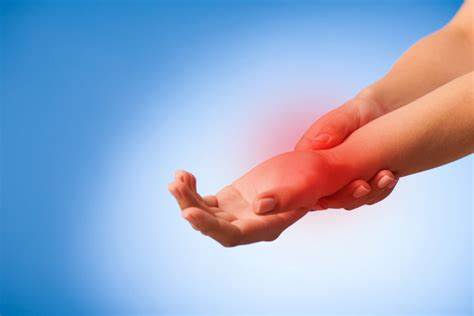Complex regional pain syndrome. General description.
- Más allá del dolor

- Apr 11, 2021
- 3 min read

General description
Complex regional pain syndrome is a form of chronic pain that usually affects one arm or one leg. This syndrome usually occurs after injury, surgery, stroke, or heart attack. The pain is inordinate for the severity of the initial injury.
Complex regional pain syndrome is rare and its cause is unclear. Treatment is most effective when it is started in the early stages. In those cases, improvement and even remission are possible
Symptoms
Signs and symptoms of complex regional pain syndrome include the following:
Ongoing burning or throbbing pain, usually in the arm, leg, hand, or foot Tenderness to touch or cold Swelling of the painful area
Changes in skin temperature (between sweaty and cold)
Changes in skin color, ranging from white and mottled to red or blue
Changes in skin texture, which may become tender, thin, or shiny in the affected area
Changes in hair and nail growth
Joint stiffness, inflammation, and damage
Muscle spasms, tremors, weakness and decrease (atrophy)
Limitation in moving the affected body part
Symptoms can change over time and vary from person to person. First, there is usually pain, swelling, redness, marked changes in temperature, and tenderness (especially to cold and touch).
Over time, the affected limb may turn cold and pale. This can manifest changes in the skin and nails, as well as muscle spasms and tightening. Once these changes occur, the condition is often irreversible.
Sometimes complex regional pain syndrome can spread from its origin to any other part of the body, for example, to the opposite limb.
In some people, the signs and symptoms of complex regional pain syndrome go away on their own. In others, the signs and symptoms persist for months to years. Treatment may be more effective if it is started early in the disease.
When to see the doctor
If you experience constant, severe pain in a limb that makes touching or moving it seem intolerable, see your doctor to determine the cause. It is important to treat complex regional pain syndrome early.
Causes
The cause of complex regional pain syndrome is not entirely clear. It is believed to be due to a lesion or abnormality in the central and peripheral nervous systems. Complex regional pain syndrome usually occurs as a result of trauma or injury.
There are two types of complex regional pain syndrome, with similar signs and symptoms, but with different causes:
Type 1.Also known as "reflex sympathetic dystrophy syndrome," this type occurs after an illness or injury that did not directly damage the nerves of the affected limb. About 90 percent of people with complex regional pain syndrome have type 1.
Type 2. This type, which used to be called "causalgia," has symptoms similar to type 1. However, type 2 complex regional pain syndrome occurs after a different nerve injury.
Many cases of complex regional pain syndrome occur after a violent trauma to an arm or leg. This can include a crush injury, fracture, or amputation.
Other major and minor trauma, such as surgery, heart attacks, infections, and even an ankle sprain, can also lead to complex regional pain syndrome.
It is not well understood why these injuries can trigger complex regional pain syndrome. Not all people with these types of injuries will develop complex regional pain syndrome. This could be due to a dysfunctional interaction between the central and peripheral nervous systems, and poor inflammatory responses.
Complications
If complex regional pain syndrome is not diagnosed or treated early, the disease can progress and lead to more disabling signs and symptoms. These can be the following:
Tissue wear (atrophy). If you avoid moving an arm or leg because of pain or if you have a hard time moving a limb due to stiffness, your skin, bones, and muscles can begin to deteriorate and weaken.
Muscle stiffness (contracture).You may also experience muscle tightening. This can cause a condition in which the hands and fingers, or the feet and toes, contract into a fixed position.
Prevention
The following steps can help you reduce your risk of complex regional pain syndrome:
Take vitamin C after a wrist fracture. Studies have shown that people who took a minimum daily dose of 500 milligrams (mg) of vitamin C after a wrist fracture had a lower risk of complex regional pain syndrome compared to those who did not take vitamin C.
Early mobilization after a stroke. Some research suggests that people who get out of bed and walk shortly after a stroke (early mobilization) decrease the risk of complex regional pain syndrome.







Comments